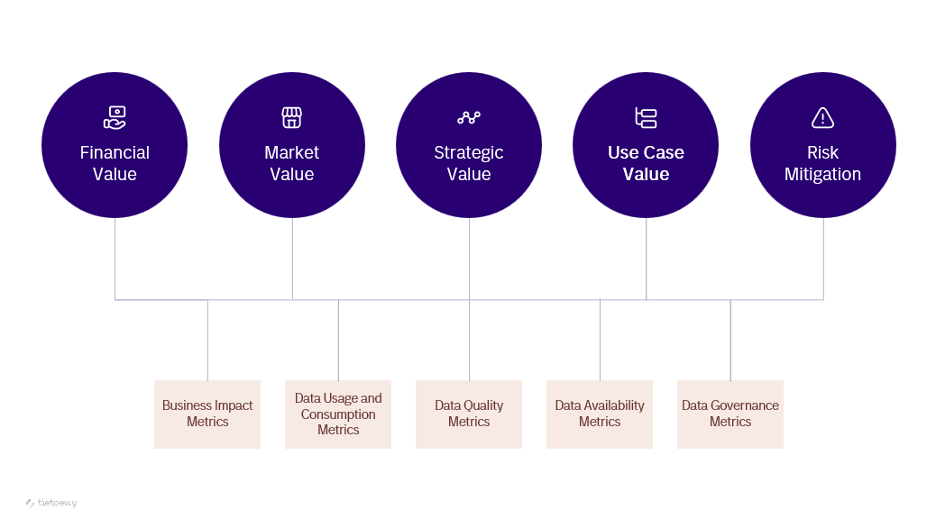
By Jonathan Huw Howells, Director Enterprise and Data Architecture, Tietoevry Create, Norway
Measuring the value of a data asset can be a complex process, as it involves assessing both the inherent and realized value. Here are some approaches to consider when measuring the value of a data asset.
- Financial Value: Calculate the monetary worth of the data asset based on its potential or actual impact on revenue generation, cost savings, or return on investment (ROI). This could involve estimating the revenue generated from data-driven products or services, cost savings achieved through data-driven optimizations, or the value of data in improving decision-making.
- Market Value: Analyse the market demand and value for the data asset. This could include assessing the willingness of external parties to pay for access to or use of the data asset, analysing the competitive landscape, or comparing the data asset’s value to similar assets in the market.
- Strategic Value: Evaluate the strategic importance and alignment of the data asset with the organization’s goals and objectives. This could include assessing the data asset’s contribution to competitive advantage, market differentiation, or enabling new business opportunities. Strategic value can also be measured by the extent to which the data asset supports important business initiatives or strategic decision-making.
- Use Case Value: Assess the value of the data asset based on its specific use cases and applications. This would involve understanding the impact that the data asset has on enabling or improving key business processes, decision-making, or customer experiences. Use case value can be measured through factors such as efficiency gains, increased accuracy, improved customer satisfaction, or enhanced risk management.
- Risk Mitigation: Consider the value of the data asset in terms of minimizing or mitigating risks to the organization. This could include assessing the asset’s role in regulatory compliance, data security, fraud detection, or operational risk management.

It’s important to note that measuring the value of a data asset is a multidimensional process. You may need to apply a combination of these approaches based on your organization’s goals, industry, and specific context.
Your organisation probably has some kind of measurements for performance and compliance, based on value and what you need to control. To measure both the performance and compliance of a data asset, you can consider the following key performance indicators (KPIs) for value and control:
Value Metrics
- Business Impact Metrics: Measure the impact of the data asset on business outcomes and decision-making. This can include metrics such as revenue generated, cost savings, customer satisfaction, and improved operational efficiency.
- Data Usage and Consumption: Evaluate how frequently and extensively the data asset is being used by different stakeholders, departments, or applications. This can include metrics such as data consumption rate, user engagement, and number of queries or requests.
Control Metrics
- Data Quality Metrics: Assess the accuracy, completeness, consistency, and timeliness of the data. This can include metrics such as data completeness, data validity, data consistency, and data integrity.
- Data Availability: Measure the accessibility and availability of the data asset. This can include metrics such as uptime, downtime, latency, and response time.
- Data Governance Metrics: Assess the compliance, security, and adherence to data governance policies and regulations. This can include metrics such as data privacy compliance, data security incidents, and adherence to data governance standards.
By monitoring these KPIs, you can gain insights into the performance of your data assets and identify areas for improvement or optimization.
To enable you on your journey to become data-driven, it is important to understand the value of data across your organization. By doing so, you can gain better insights into techniques and technologies that will help increase control aspects.
Jonathan has extensive experience in the private and public sector, working across Europe, with over 25 years of strategic and operational industry experience across a variety of industries. As a Consulting Director at Tietoevry Create and a member of the Chief Architect Forum, Jonathan looks at ways to improve business outcomes by navigating digital and data ecosystems for the benefit of the projects and organisations he works with.
